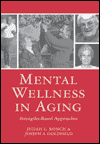![]()
Search
Recent Posts
- ChangingAging.org Redesign -- Please Bookmark!
- Disaster in Buffalo
- Power Up Friday
- Blanchard WinsDays
- Kevin Frick writes...
- Monkhouse Monday
- Getting Closer!
- Blanchard WinsDays
- Power Up Friday
- My Pick for Health and Human Services
- Understanding Health Care Reform
- Facts Are Stubborn Things: Social Security Edition
- Monkhouse Monday
- Localism is Coming
- Krugman Can't Wait...
Recent Comments
Category Archives
- AGING 100
- Aging
- Culture
- Dementia
- Eden Alternative
- Erickson School
- Green House
- Health Policy
- Longevity
- Media
- Rockets
Monthly Archives
- February 2009
- January 2009
- December 2008
- November 2008
- October 2008
- September 2008
- August 2008
- July 2008
- June 2008
- May 2008
- April 2008
- March 2008
- February 2008
- January 2008
- December 2007
- November 2007
- October 2007
- September 2007
- August 2007
 Subscribe to this blog's feed
Subscribe to this blog's feed
Announcements

Blog Data
« Glass Half Full | Main | Political Predictions »
May 5, 2008 |Permalink |Comments (0)
Power-Up Tuesday: Antipsychotic Restraints Part II
[Editor's Note: Continued from Al Power's April 25 post Antipsychotic Restraints]
My good friend (and restraint reduction pioneer) Dr. Bernie Shore once said to me, “You know, Al, we have a lot of people with dementia who are calm and engaged when you sit and interact with them, but they get agitated again after you leave, and you can’t do one-to-one care all day.” We have all had this experience. Here’s my explanation:
“That person is sitting on a ledge, 50 stories up. And you can crawl out on the ledge and put your arm around him, tell him he’s okay, and calm him for a moment. But when you leave, he’s still on the ledge.”
This is why simple algorithms like a weekly hand massage and daily washcloth folding don’t quite do the job. Until the environment feels safe and comfortable, not toxic and foreign, one can never make great inroads into serious medication reduction.
But it’s happening out there, as we speak. Some people have moved below 5 - 10% prevalence of antipsychotics, and a few homes keep the number near zero.
Three steps to transforming the care environment: (1) create meaningful, continuing relationships. These allow everyone to be well-known, and provide care partners with vital clues to the experiences of the elder. (2) create an environment filled with positive, affirming interactions that provide the elder with choice, engagement and meaning, and respect her basic personhood. (3) Move our frame of reference to enter the elder’s world, rather than to drag her into our reality.
This last step bothers many people, who feel that it means “giving up” on the person, or allowing her to slip further. Some of us have found, however, that much of the psychic distress people experience is caused by trying to force them back into a pattern of “normalcy” that they can no longer process. In fact, when you go to the elder’s point of view and relate on their terms, providing a safe, validating approach and reducing their medications, people usually improve their cognition and engagement to a greater extent than we see when we try to force the improvement.
Ironic, isn’t it?
Is it easy? No! Is it critically important? Yes!!
I’m collecting success stories of people working in this realm. Feel free to share them or pass on any questions; here, or to apower@stjohnshome.com.














